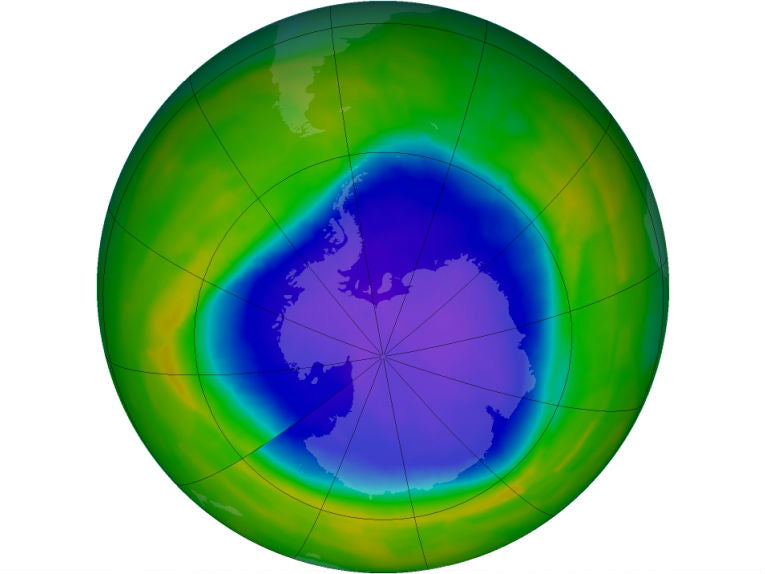This year's Antarctic ozone layer hole was the ninth largest on record, say leading scientists. Colder than normal temperatures contributed to the 10.05million square mile Antarctic ozone hole - larger than the whole of North America.
Scientists from the North American Space Agency (NASA) and the National Oceanic and Atmospheric Administration (NOAA) measured the hole at its annual peak on 12 September.
The ozone hole above the South Pole, recorded at its deepest point on 9 October, was measured at 102 Dobson Units, the 16th highest in 26 years of readings.
Paul Newman, chief scientist for atmospheres at NASA's Goddard Space Flight Center, in Greenbelt, Maryland, says, "The colder than average temperatures in the stratosphere this year caused a larger than average ozone hole.
"Even though it was relatively large, the area of this year's ozone hole was within the range we'd expect given the levels of manmade ozone-depleting chemicals that continue to persist in the atmosphere."
The Antarctic ozone hole appears in the spring months of August and September. Satellites and instruments carried high into the atmosphere by balloons and others on the ground are used to check the size of the ozone hole, the ozone in the stratosphere and the level of problem chemicals.
The ozone layer is vital because it protects the Earth from too much ultraviolet radiation, which can increase the risk of skin cancer and other health problems if people are exposed to high levels.
James Butler, director of NOAA's Global Monitoring Division in Boulder, Colorado, says, "The man-made chemicals known to destroy ozone are slowly declining because of international action, but there are still large amounts of these chemicals doing damage."
After months of Antarctic darkness, the sun rises each spring and reacts with ice clouds and harmful chemicals to attack the ozone layer. This can last up to three months, when conditions change and the ozone hole closes.
In recent years, there has been a gradual decline in chemicals that diminish the ozone. The 1987 Montreal Protocol, which led to the elimination of harmful chemicals in refrigeration and aerosol spray cans, has played a major part in this. Even so, if could be decades before the damaging chemicals are dispersed from the atmosphere.
Sophisticated computer predictions show the ozone could recover by 2050, although the Antarctic hole may not be repaired for another 20 years, show figures from the 2010 Quadrennial Ozone Assessment, published by the World Meteorological Organization and United Nations Environment Programme, with input from NASA and the NOAA.
* Last Friday 28 October, NASA launched a new satellite for the National Polar-orbiting Operational Environmental Satellite System Preparatory Project, called the NPP. On board is a new ozone-monitoring instrument, the Ozone Mapping and Profiler Suite, which will provide more global ozone information each day than before.
href="../../../environment/eco-friendly/index.html">Eco-Friendly









